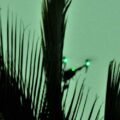NASA reported this week that it flew the fastest spacecraft in existence so close to the Sun that it detected the intricate structure of “fast” solar winds originating near its surface.
Traveling at speeds 0.064% the speed of light, the Parker Solar Probe is the fastest manmade object ever built and put into space. Since 2018, Parker has been making observations of the Sun’s outer corona, and in 2025 will make its nearest approach at distances less than 9.86 solar radii from the Sun’s center.
In advance of its near approach in 2025, this week, the American space agency reported that its solar probe flew close enough to the Sun “to detect the fine structure of the solar wind close to where it is generated at the Sun’s surface,” allowing it to detect elements that are generally lost by the time these “fast” solar winds become a burst of charged particles once they exit the corona.
The new observations were reported this week in the journal Nature, detailing research led by Stuart D. Bale, professor of physics at the University of California, Berkeley, along with James Drake of the University of Maryland-College Park.
In their paper, streams of high-energy particles were detected, which match what the authors characterized as “supergranulation flows” within coronal holes where magnetic field lines emerge on the Sun’s surface, which are suggestive of regions where the solar winds are believed to emanate.
During the “quiet periods” in the Sun’s natural 11-year cycles, these holes begin to emerge all across the surface of the Sun, producing solar winds in the direction of Earth and often producing auroras as they impact Earth’s atmosphere.
However, ghostly green auroras aren’t the only effect of these solar winds when they extend toward Earth. Often, they can negatively impact communications systems like GPS and satellites, and could potentially even disable portions of the electrical grid.
Understanding how and where the solar wind originates will help predict geomagnetic storms that, while producing beautiful auroras on Earth, can also wreak havoc with satellites and the electrical grid.
In their research, Bale, Drake, and their team members likened the Sun’s coronal holes to shower heads, where water is captured and focused at the location of tiny jets from which small bursts of liquid emerge.
Magnetic fields break and reconnect along the Sun’s surface as they pass in opposite directions in funnels estimated to be as much as 18,000 miles across, which eject streams of charged particles outward.
“Where these supergranulation cells meet and go downward, they drag the magnetic field in their path into this downward kind of funnel,” Bale said in a statement released by the University of California at Berkley.
“The magnetic field becomes very intensified there because it’s just jammed. It’s kind of a scoop of magnetic field going down into a drain,” Bale says, adding that the space between each of these “drains” were precisely what the Parker Solar Probe succeeded in detecting during its recent near flight by the Sun; information which the team says is moving scientists closer to understanding the underlying mysteries of solar winds.
“Solving the mystery of the solar wind has been a six-decade dream of many generations of scientists,” said Nour Raouafi, one of the study’s co-authors.
“Now, we are grasping at the physical phenomenon that drives the solar wind at its source — the corona.”
The team’s paper, “Interchange reconnection as the source of the fast solar wind within coronal holes,” appeared in Nature on June 7, 2023, and can be read online.

